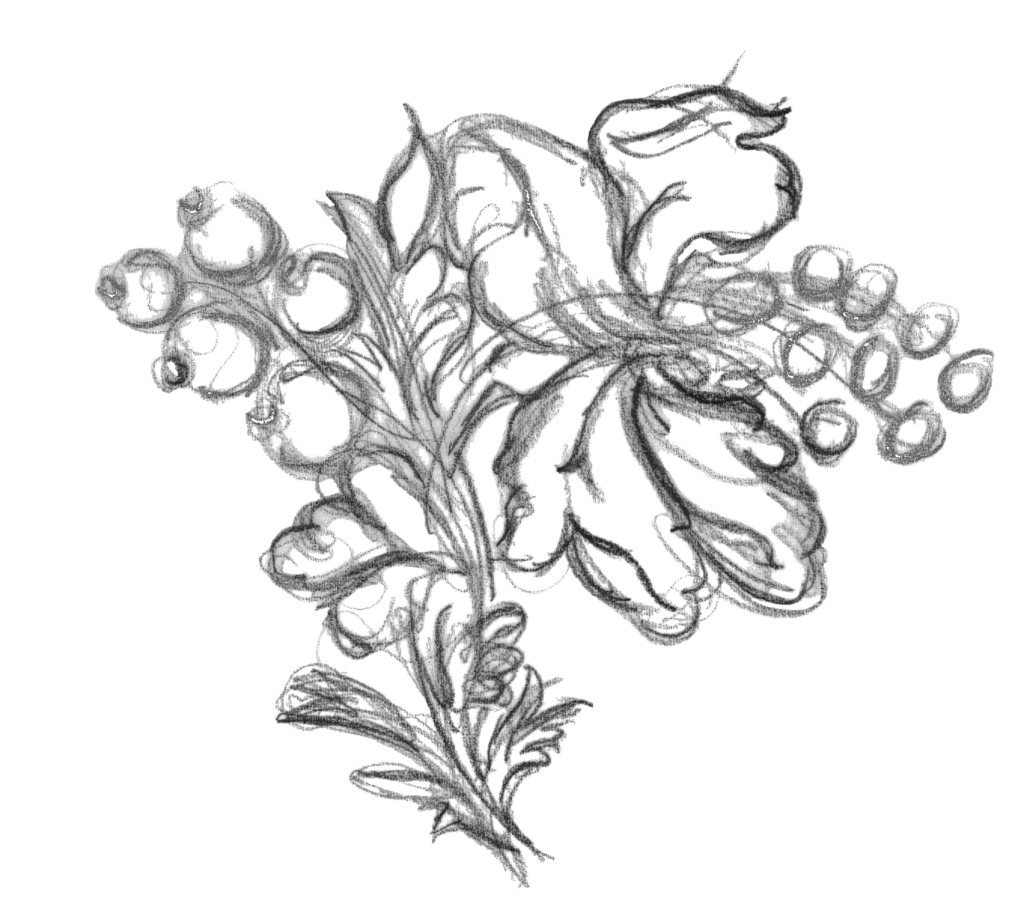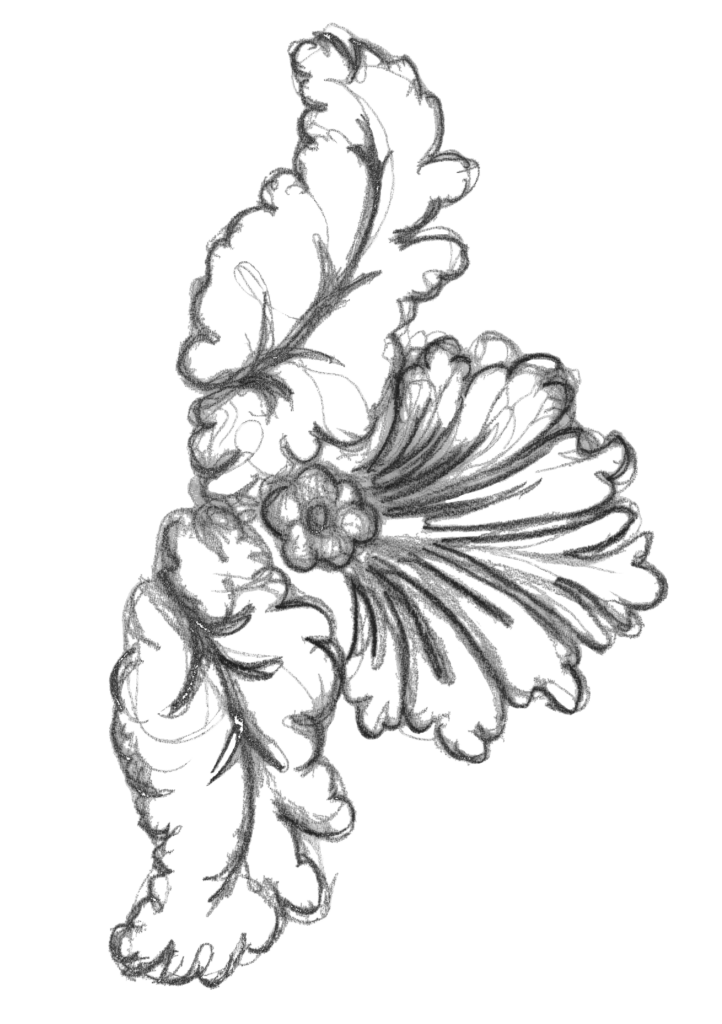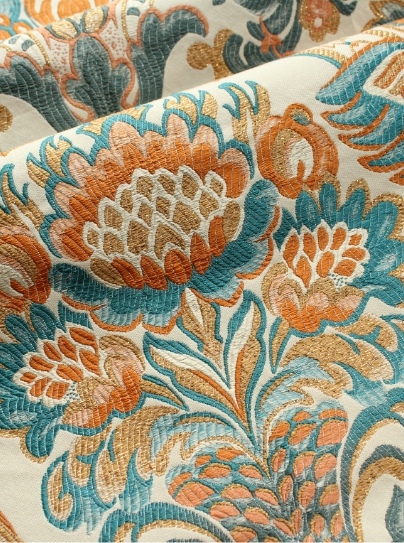Conservation & Restoration
In this article we explore the language around conservation & restoration and how this might be approached when considering the re-presentation of an interior design scheme.
Conservation is the processes by which items are cared for and maintained to be preserved from future damage.
Familiar examples would be looking after textiles, paintings, books and furniture. Work can be carried out on site or in specialist facilities and can involve cleaning and carrying out careful repairs. Conservation is a specialist area requiring many years of study and experience, the National Trust have their own dedicated textile conservation studio based in Norfolk. Local to Sudbury we are lucky to have worked on many projects with May Berkouwer textile conservation.
Restoration is the action of returning something to its original condition. This term is often used in two different contexts;
1) From a conservation perspective (as detailed above) a restoration would involve working on the item to bring it as close to its original splendor as possible, whilst retaining its history and unique story.
2) Restoration is also used to refer to a much wider scheme or overall approach, where some elements may require recommissioning. Often, as much of the original scheme as possible is retained and restored (conserved) for as long as possible but eventually elements can simply become too fragile or lost over time.
Humphries Weaving are commonly involved in this second approach and are best known for our historic restoration work, covering; research, consultancy, design origination, custom colour development and weaving to order. Some of examples of this approach are shared below.
Furniture Restoration; Where the original frame may be conserved but the fabric is thread bare and beyond saving. Our aim is to allow the furniture to be enjoyed in its original glory, taking the same approach, time and care as the original weaver but utilising contemporary techniques and equipment to reproduce the fabric.
An excellent example of this approach is the restoration we carried out at Dumfries House. Here we documented and redrew the design, hand drawing areas of the repeat that were lost.
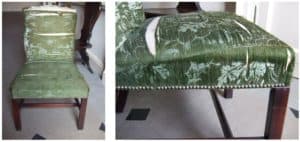
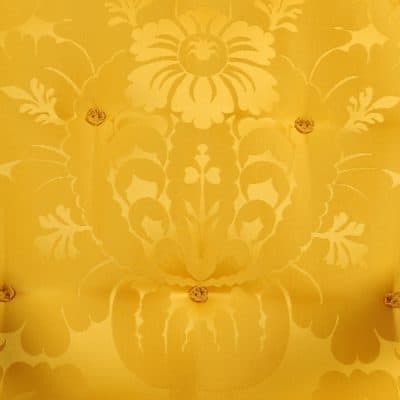
Walling Restoration; Due to light and climate exposure fabrics can degrade over time, they often fade significantly or change overall colour and can start to split; silk in particular can degrade to the point where it starts to fall off as dust.
When approaching a restoration we value the original textile and will often analyse and document the pattern, colour and original construction as part of our process. This helps us to recreate the new commission as faithfully and accurately as possible to the original, we also often trusted to care for and store the original piece in our own fabric archive after the project is complete.
For some clients they may have already exhausted the conservation route, perhaps extending the fabric life by decades but eventually rather than loosing the textile entirely they choose to retire it and recommission a replacement.
We have also worked on many projects in conjunction with conservators, where there has been a collaborative approach, such as Castletown House, Ireland. Here the walling was skillfully conserved, whilst the curtains and furniture were recommissioned by Humphries Weaving. The fabrics can be seen working in harmony together within the room.
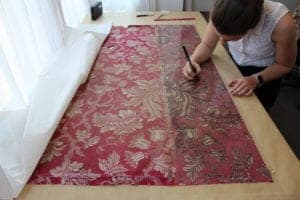
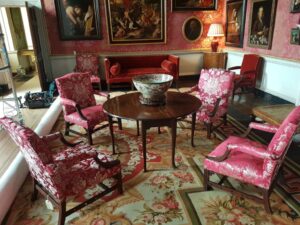
Photo Credit; Paul Tierney Office of Public Works
Interpretation schemes; these can also vary in their approach from reinstating a historic scheme with the evidence available or creating a new scheme to the clients brief;
1) They can be reproductions based on thorough academic research, archive pieces and room photography, such as a recent project for the Henry Ford Estate. The fabric was recreated from black & white archive photographs from the house archives, and the colour taken from a receipt of the original fabric purchase, some hundred years previously. The result was a custom dyed silk & linen Brocatelle, in this unique Chestnut colour palette.
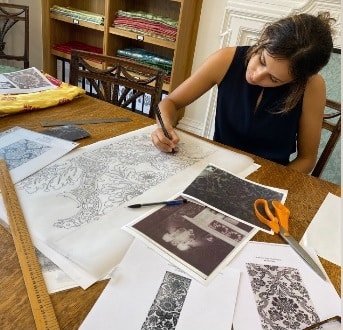
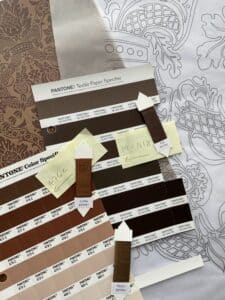
2) Interpretation schemes may also involve selecting a fabric that is ‘in keeping’ with the period, style of house and even the architect but where no fabric or documented history exists. When moving away from academic restorations in public spaces to individuals and their private spaces there is more room for personal taste and playing with scale, colour and composition.
In this instance Humphries Weaving may offer period designs from our archive and can offer suggestions on appropriate colour choices. However, we also recognise that many of these interiors are homes and need to be enjoyed by those who use them, which is a chance to create truly unique textiles.
If you wish to read more about some of the projects we have been involved in then please visit the Our Work pages
To learn more about Humphries Weaving, click here.
[/spb_text_block]
